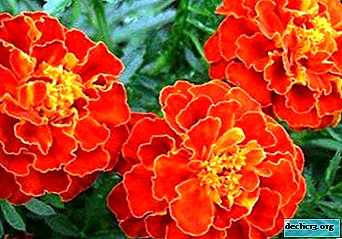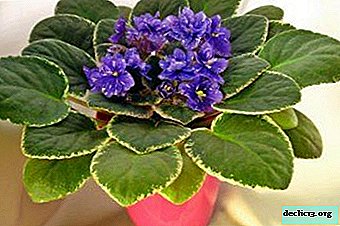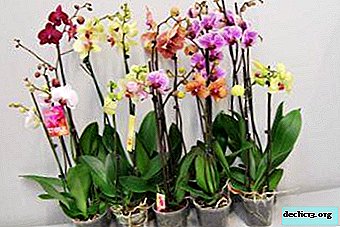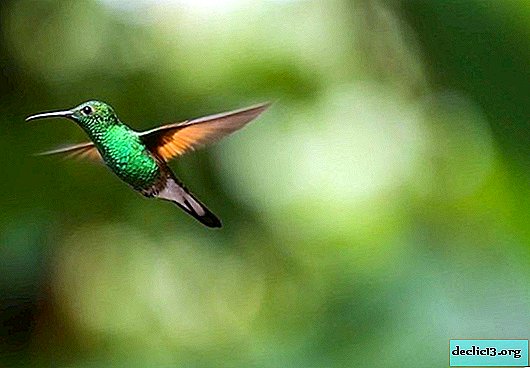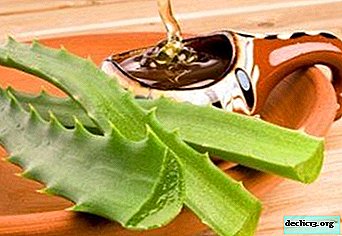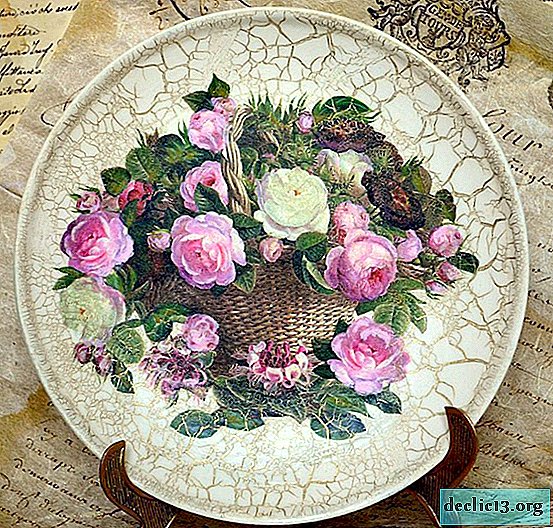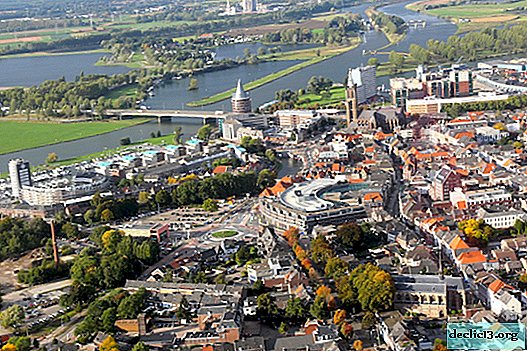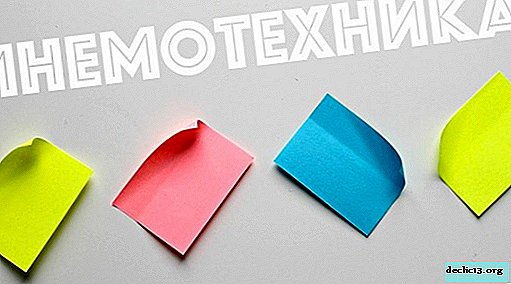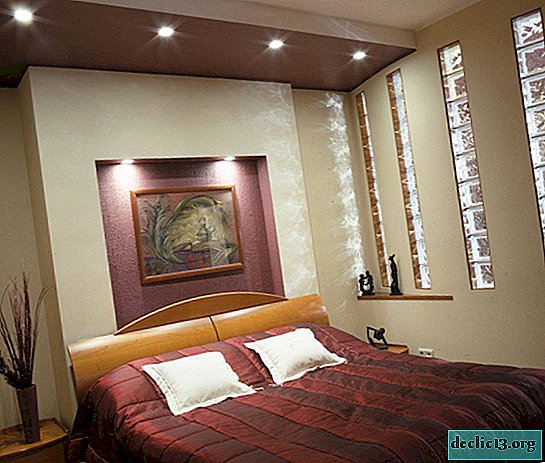Bright Rhododendron Francesca: a description of the appearance and rules of care
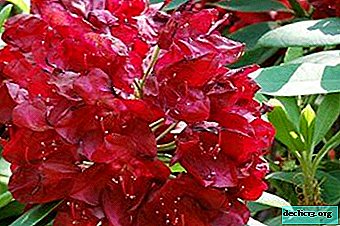
Rhododendron Francesca is a hardy and beautifully flowering shrub, quite popular among lovers of bright colors of hybrid rhododendrons.
This plant captivated the heart of many gardeners, due to its bright beauty and resistance to cold and pests. Large bushes, with large pomegranate flowers, can decorate any garden and will not leave anyone indifferent. In our article you will find a detailed description of this plant and learn how to properly care for it.
A brief definition of this type
Francesca rhododendron (hubr Francesca) is a numerous genus of hybrid evergreen rhododendrons of the Vereskov family. The homeland of natural varieties - primary sources is considered to be the Himalayas, the Caucasus, North America.
Detailed description
 Rhododendron Francesca (rhododendron Francesca) is an evergreen shrub of medium height, grows to 1.5 - 1.7 m in height. Stems are self-growing. The bush is sprawling, grows quickly, forming a crown in the form of a sphere. The leaves are large, long, up to 12 cm in length, bright green, dense, glossy.
Rhododendron Francesca (rhododendron Francesca) is an evergreen shrub of medium height, grows to 1.5 - 1.7 m in height. Stems are self-growing. The bush is sprawling, grows quickly, forming a crown in the form of a sphere. The leaves are large, long, up to 12 cm in length, bright green, dense, glossy.
The flowers are large, up to 6 - 8 cm in diameter, dark red, with pomegranate tint. With proper care, the flowers retain color saturation throughout the entire flowering period. Petals are wavy. Inflorescences are dense, connect 20 to 25 flowers. The root system is superficial, flat, not requiring loosening of the substrate, deepening during planting.
History of occurrence
The maternal varieties of Rhododendron Francesca were discovered at the end of the 19th century. in the mountains of Germany. Now natural varieties are found in Africa, Korea, Japan. Modern breeders have bred new varieties of evergreen rhododendron, so they are called hybrid. Their classification in the scientific community often causes a lot of controversy and amendments so far.
What's the Difference?
Rhododendron Francesca is distinguished by a pretentiously brightly colored petals. This variety has dense inflorescences - giants, unites up to 26 flowers. The hybrid stands out not only by decorativeness, but also by good frost resistance, withstands frosts up to 27 - 29 ° С. Gardeners note the resistance of this variety to diseases and pests of open ground.
Subcort
Hybrid kalsap
 A tall bush in adulthood reaches 1.2 - 1.3 m in height and width. Crohn is wide. The flowering is dense and generous, occurs at the end of May.
A tall bush in adulthood reaches 1.2 - 1.3 m in height and width. Crohn is wide. The flowering is dense and generous, occurs at the end of May.
The leaves are dense, covered with gloss, saturated dark green color, medium size, up to 7 - 8 cm. The flowers are milky white, with dark burgundy spots - placers. The variety is resistant to frost.
Midnight Mystic
 It grows to 1 m in height. The crown is wide, spherical. It has an average frost resistance - up to - 18 ° С. Shelter for the winter is required.
It grows to 1 m in height. The crown is wide, spherical. It has an average frost resistance - up to - 18 ° С. Shelter for the winter is required.
The color of the flowers is light pink, with a wide raspberry border. In shape, the flowers are curly, curly. The petals are decorated with dark and yellow dots. It blooms in early May.
Cosmopolitan
 Evergreen shrub, adult flower can be up to 4 m high. Differs in high frost resistance - maintains to -29 ° C in the winter.
Evergreen shrub, adult flower can be up to 4 m high. Differs in high frost resistance - maintains to -29 ° C in the winter.
The leaves are large, oblong, dense and shiny. The flowers are pale pink, with a burgundy scattering of spots and dots. Stamens are curly.
Lita
 The loose bush grows to 120 - 130 cm in length and grows to 1.5 m in width.
The loose bush grows to 120 - 130 cm in length and grows to 1.5 m in width.
It is highly resistant to frost., up to -30 - 35 ° С.
The flowers are pink with a wavy border, inside the flower there is a bright yellow - green spot. Variety bred in Latvia.
Hague
 Evergreen shrub, branched, spherical crown. It blooms from mid-June, flowering is short - 2 to 3 weeks. The leaves are dense, glossy, dark green, 13 cm long.
Evergreen shrub, branched, spherical crown. It blooms from mid-June, flowering is short - 2 to 3 weeks. The leaves are dense, glossy, dark green, 13 cm long.
The kidneys are red. The flowers are saturated - pink in color, wavy along the edges, up to 5 - 6 cm in length, petals with red - orange dots. Inflorescences are dense, up to 15 flowers in each. The Hague variety is very hardy. You can read about frost-resistant rhododendrons in this article.
Progress
 The bush is a high-growing, adult flower with a two-meter growth. Winter hardiness is sufficient, withstands frosts up to - 27 ° C.
The bush is a high-growing, adult flower with a two-meter growth. Winter hardiness is sufficient, withstands frosts up to - 27 ° C.
It blooms in early May. Leaves are dense, dark green, medium length. The flowers are white - pink, wavy at the edges. Petals with a scattering of burgundy spots.
Bloom
- When and how. Francesca's rhododendron bloom is late May - early June. Abundant flowering, lasting up to 3 weeks. To prevent flowers from fading in the bright sun, shading or planting under the scattered shadow of pines and rare spruce trees is required.
- Care before and after flowering - features. During bud formation, the temperature should be reduced to 12 - 15 ° C. During flowering, the temperature can rise to 18 - 20 ° C, taking into account intensive watering and regular spraying. After flowering, strongly elongated shoots are pruned, you can use cut stems for propagation by cuttings.
Important: during the flowering period of rhododendron Francesca, it is not recommended to spray flowers, spots appear on them.
- What to do if it does not bloom. You should look at the bush for pests and fungi. It is necessary to adjust the watering, perhaps the flowers lack moisture. With the wrong soil composition or lack of minerals in it, flowering does not occur, it is necessary to feed with special fertilizers for azaleas. To prolong the flowering of Francesca rhododendron, you need to timely remove dry leaves, flowers and inflorescences.
Use in garden design
Francesca's rhododendron is grown in huge flowerpots and drawers on loggias and balconies. Also, this variety can be planted along the curbs on the lawns. Used in mixed rocky gardens of oriental style, in coniferous compositions.
Step-by-step care instructions:
 Choosing a landing place. Rhododendron Francesca does not tolerate direct sun, prefers partial shade in a place protected from through wind. It is better to plant in diffused coniferous shade. You can select areas adjacent to the northern part of the house.
Choosing a landing place. Rhododendron Francesca does not tolerate direct sun, prefers partial shade in a place protected from through wind. It is better to plant in diffused coniferous shade. You can select areas adjacent to the northern part of the house.- What should be the soil. The soil should be acidic, breathable, loose. The composition of the substrate for the variety Francesca:
- Sheet earth -1 h.
- Pine litter - 1 h.
- Sour peat - 1 hour
- Sand - 1 hour
- Granules of mineral fertilizers.
- Drainage base.
When watering, it is necessary to use purified acidified water to support the necessary acidity of the soil.
- Landing. Planting time for Rhododendron Francesca is spring and autumn.
- They dig a planting hole more in volume than the root system 2 times - 55 cm deep and 65 - 70 cm in diameter.
- A drainage layer of 10-15 cm is laid on the bottom of the pit.
- Half of the substrate is poured with a slide.
- The soil around the root is well pressed, it is undesirable to leave air pockets.
- The roots spread well, compacting the soil.
- Fall asleep with a substrate on the root neck.
- Trunk circles are mulched with a layer of foliage, peat and sawdust 5-6 cm thick.
- Abundantly watered.
- Temperature. The optimum temperature for Francesca variety during the ripening of buds is 10 - 15 ° C. In the summer, in the heat during shading and regular spraying, the flower can tolerate a temperature of 20 - 25 ° C. Hybrid rhododendron Francesca (hybrid francesca) is frost-resistant, permissible temperature in winter is up to - 25 - 27 ° C.
- Watering. During planting or transplantation, Francesca rhododendron requires abundant wetting of the substrate to a depth of 25 cm. In summer, watering daily with purified water. For each adult bush - 8 - 10 liters of water. In winter and autumn, watering is reduced, watering is necessary when the soil is completely dry over the entire surface of the trunk circle. In late autumn and winter, you can only water in dry weather.
To preserve the freshness of the bush in the summer, daily spraying in the morning or after sunset is advisable.
- Top dressing. In the first year after planting, Francesca rhododendron needs moderate top dressing - the fertilizer solution should not be intense. Every 12-14 days during the ripening of buds, they are fed with mineral fertilizers: 10-15 g of superphosphate in 5-6 l of water. Organic fertilizers are also used: manure well soaked in water.
- Pruning. Francesca rhododendron pruning is recommended after flowering. To preserve the rounded crown, the old shoots are cut in half. It is important to treat the places of cuts for disinfection with ordinary oil paint or garden var.
- Transfer. Francesca rhododendron is usually transplanted in the spring, and can be transplanted after flowering. Immediately after transplanting, for quick rooting, it is better to cut off all the buds, flowering can weaken the transplanted flower.
- How to prepare for the winter. Francesca's young rhododendrons require shelter with burlap or spruce branches. Adult bushes for winter insurance are tied with twine or bend stems to the ground, shifting the stems with coniferous branches inside the bush itself. A layer of mulch for the winter update. In the spring, shelter is removed gradually to avoid sunburn.
How to propagate?
Francesca rhododendrons are usually propagated by cuttings after flowering, in mid-July.
- Cuttings are cut with a length of 7 - 9 cm.
- For 1 day, the cuttings are dipped for a day in a solution with zircon.
- Planted in a finished special substrate to a depth of 2 cm.
- Seedlings take root very slowly.
In the open ground, seedlings are planted next spring, seedlings are grown in a cool place.
Diseases and Pests
Francesca is quite resistant to diseases and pests, but problems may arise:
 In summer, garden snails and slugs usually attack bushes. You need to assemble them manually.
In summer, garden snails and slugs usually attack bushes. You need to assemble them manually.- A soap solution or spraying with a fungicide will help get rid of the spider mite.
- Dangerous for rhododendron Francesca mealybug, rhododendral bug and flies. Spraying with phytoderm or other insecticides will help get rid of these pests.
- To get rid of rust, chlorosis and other fungi, processing is required - watering and spraying with fungicides.
But if you follow all the rules of care, cut and feed Francesca's rhododendron in time, you can expect colorful flowering.

 Choosing a landing place. Rhododendron Francesca does not tolerate direct sun, prefers partial shade in a place protected from through wind. It is better to plant in diffused coniferous shade. You can select areas adjacent to the northern part of the house.
Choosing a landing place. Rhododendron Francesca does not tolerate direct sun, prefers partial shade in a place protected from through wind. It is better to plant in diffused coniferous shade. You can select areas adjacent to the northern part of the house. In summer, garden snails and slugs usually attack bushes. You need to assemble them manually.
In summer, garden snails and slugs usually attack bushes. You need to assemble them manually.
